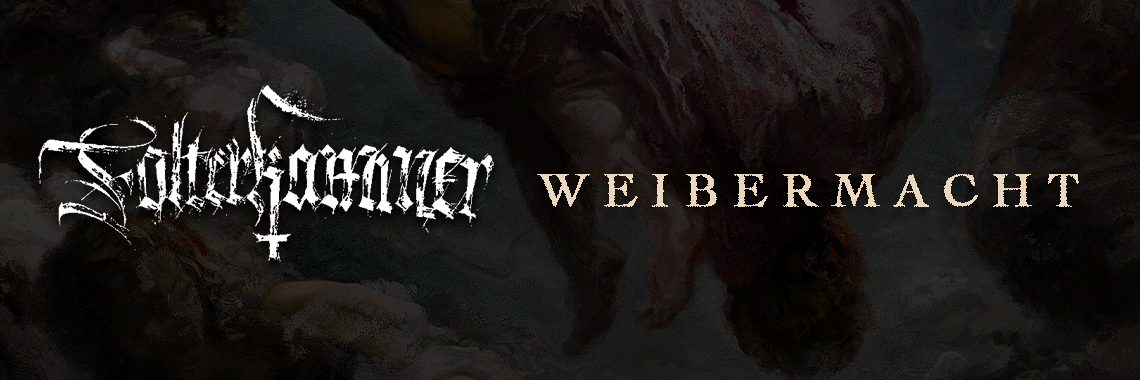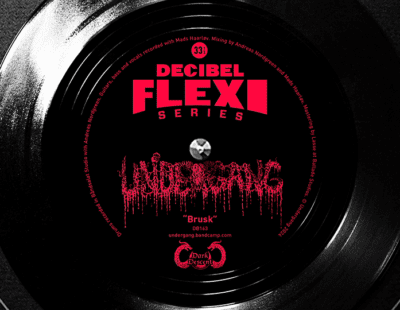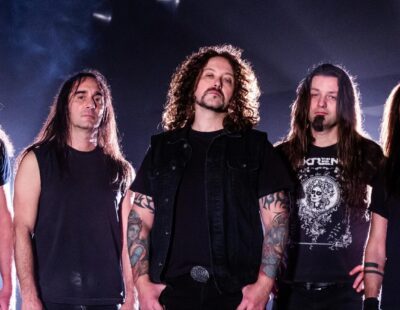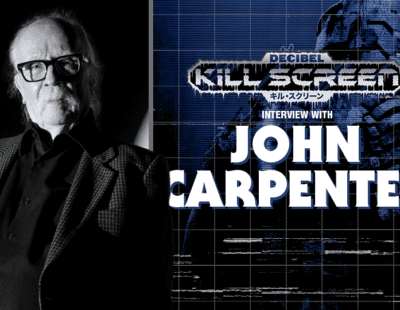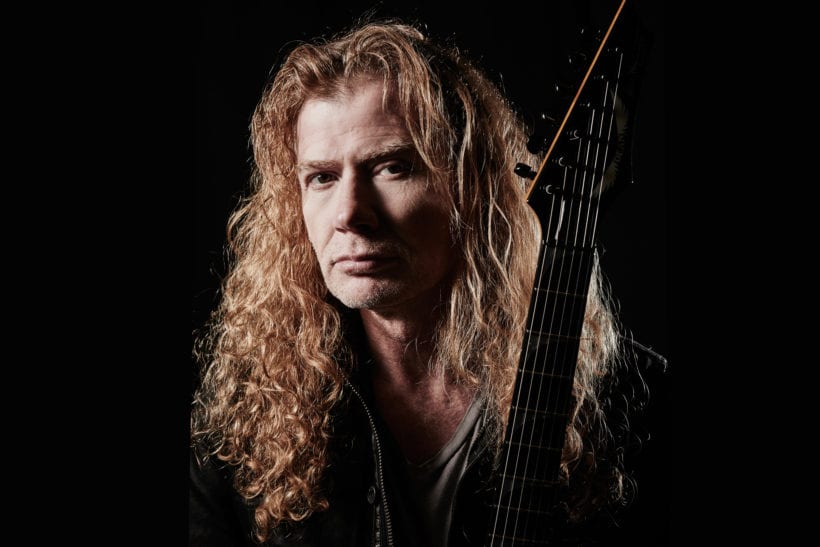
Decibelians are all too familiar with Megadeth‘s Rust in Peace effort. In all of metaldom, it’s one of the top records of our time, our scene, and our culture. From “Hanger 18” and “Holy Wars… The Punishment Due” to “Five Magics” and “Rust in Peace… Polaris,” Megadeth’s mantle piece is near and dear. Many years ago, Decibel sought to tell the story of Rust in Peace in our May 2012, issue No. 91 (later expanded in The Decibel Hall of Fame Anthology Volume II), and we did just that by interviewing Dave Mustaine, David Ellefson (who hadn’t rejoined Mustaine yet), a reluctant Marty Friedman, and an effusive Nick Menza (RIP). The story was riveting, informative, and altogether kick-ass (yes, I was responsible for the entire deal).
Now, Dave Mustaine, music journalist Joel Selvin, and a team of other heavyweights get their turn at the mega-ton warhead that is Rust in Peace via a new book, Rust in Peace: The Inside Story of the Megadeth Masterpiece. Across 200-plus pages, the story, the making of, the personnel responsible for it, and the sheer perseverance that it took to complete it unfolds. Who’d a thunk a thrasher-piece like Rust in Peace would’ve gone through so many iterations, had so many things conspiring against it, only to emerge fucking resplendent and punishing in its entirety? Who would’ve imagined that such a strikingly metallic record would go on to sell gold (1991) and platinum (1994)? Nobody would’ve thought we’d be here today, pouring over the details of Rust in Peace through Hatchett Books’ Rust in Peace: The Inside Story of the Megadeth Masterpiece.
Yet, here we are and it couldn’t be any better.
Why Rust in Peace and not, say, Peace Sells or Countdown? What was compelling about Rust for you to write about it for the new book?
Dave Mustaine: I don’t know. It just kind of came out that way. It was the 30th Anniversary. Almost as if as a time machine had lined up. Rust in Peace was by no means an easy child to birth. It was one of the harder records to bring to life. I’m glad we did it this way. With the success of it, I’m hoping we can get a lot more new fans to share the story of about my nutty little thing I got here.
Rust in Peace is one of the bright, shining pieces in Megadeth’s catalog. I was there when it was released. I was into it immediately. I’m surprised, after reading through all this, that you had enough wherewithal to complete the record.
Dave Mustaine: There were tremendous expectations. It was almost insurmountable. If you look at the record that was before that had any relevance, which was Peace Sells… but Who’s Buying?, we experience a huge lineup shift over at Capitol Records. They started shuffling around presidents. In the 17 years that we were there, they had seven presidents. Now, think about that. If you do the math that’s little over two years for each guy. On top of the fact, these guys don’t want to inherit somebody’s red-headed step-child. They want to break their own Nirvana. Whenever these guys take over, it’s more like, “Who can I sign?” They’re not about giving much-needed oxygen to the bands that have been carrying the label for decades.
Always about the new, shiny car.
Dave Mustaine: [Laughs] The new, shiny object.
You co-wrote with Joel Selvin. When the book was all said and done, did you read back on things and think, “How did we survive? How did we persevere?”
Dave Mustaine: Sometimes I’ve not been too forward-thinking about the things I’ve shared about my life. I can only hope by doing that I’ve helped people. In fact, I know I’ve helped some people in certain circumstances. I was in Kentucky and this kid, who had cancer in his throat, came up to me and said something. Next thing I know I was holding his throat and praying for him. I don’t know where that came from ‘cause that’s not who I am. The next time we went back there, I called him up to see if he was OK, his mother said, “Well, no, he’s not doing very good. We didn’t tell him that you were here. We actually told him you weren’t coming to town. That you had canceled. We didn’t want him to go out. He’s too weak right now. They say he’s only got a few more days.” The reality of that hit me pretty hard. I thought, “Motherfucker!” I really took it personally. I get close to people. Doesn’t matter what the reasoning is that starts the conversation. That was great about the whole Rust in Peace period. We really made fast and furious friendships with the Clash of the Titans stuff that we did. Not only in the United States with Anthrax and Alice in Chains, but when we did it in Europe, when we did it with Testament and Suicidal Tendencies, that was fabulous as well. I wish I could go back in time and re-live all those days. Now, looking back, it all went by in a blur.
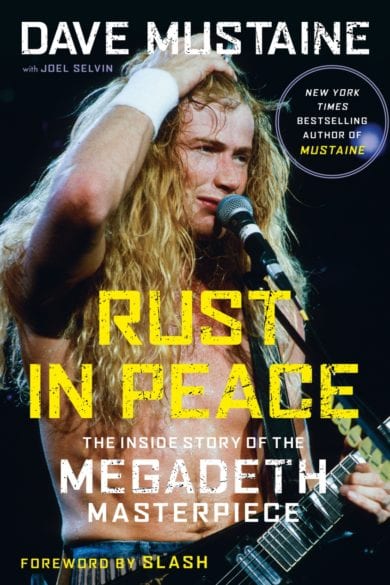
Dave Mustaine: We lived life at two speeds: stop and full-on. There wasn’t a lot of time for us to stop and get stickers for the Winnebago.
When did the book originally kick off?
Dave Mustaine: Joel will be able to tell you when we really got started. It was probably around the time that I was doing the Experience Hendrix stuff, which was also around the time that I got diagnosed. So, probably a year or two ago. It didn’t fly to completion let me put it that way. We were taking our time, and I was having a lot of hardship with the radiation and chemotherapy. My memory wasn’t that great. Remember, I wasn’t sitting around waiting for Joel or other people to call me. I was trying not to die.
You announced last March that you were cancer free. It’s great to have you in good health.
Dave Mustaine: Thank you! It’s good to be in good health.
The producer/mix rebound from Mike Clink to Max Norman was also commendable. What was that like going through the change?
Dave Mustaine: Well, it was Micajah [Ryan] who did most of it. Mike was more of a risk for us. He didn’t know metal. So, it was really just a change from Clink to Micajah. Remember, I was also a producer. I was always there. I never came and went.
The story put forth in Rust in Peace: The Inside Story of the Megadeth Masterpiece is more about perseverance than anything. To me, at least.
Dave Mustaine: There’s one thing about Rust in Peace that’s different from any other Megadeth record. I can tell you that record had more put on the front side of it than any other we’ve had. We had a demo version of it at SBK Studios in Hollywood. Then, we did another demo version at EMI Studios. Then, we did a third demo over at Capitol. Well, not Capitol, but at Rumbo (Recorders Studio), which was owned by Captain & Tennille. In fact, I heard that Captain (Daryl Frank Dragon) had recently passed. My heart goes out to his family.
What are your expectations for the book?
Dave Mustaine: It would be inhuman to not have any expectations. Whether they’re real or if they can be met is a different story. Not everything I do can be turned into gold. If it happens, then great! I think, for me, it’s easier for me to do my best with everything I do, and be happy with the way things turned out. I was very happy with the way the memoirs (Mustaine: A Heavy Metal Memoir) turned out. Who would’ve thought that I’d be a best seller? That was cool. This book has a lot of other writers in that gives it a lot of different flavors in it. When you have a lot of writers telling the same story it goes back to the paradigm of the gospels where it’s many people telling the same or similar story. There’s a Japanese word for writing a book the way we did. I know Joel mentioned it to me. Regardless, the book is really cool.
** Rust in Peace: The Inside Story of the Megadeth Masterpiece is out now on Hachette Books. Go to Hachette’s site for order links (HERE).
** Decibel’s own Hall of Fame feature on Megadeth’s venerated Rust in Peace effort can be read HERE (intro only), and if that’s not enough Mustaine, Ellefson, Menza, and Friedman for you, the issue with the full, 6000-word piece can be ordered HERE.

